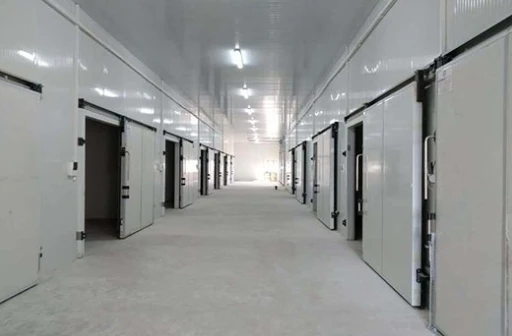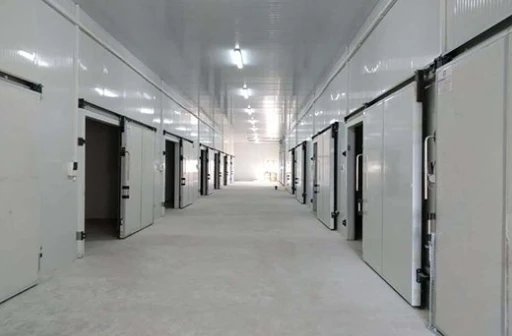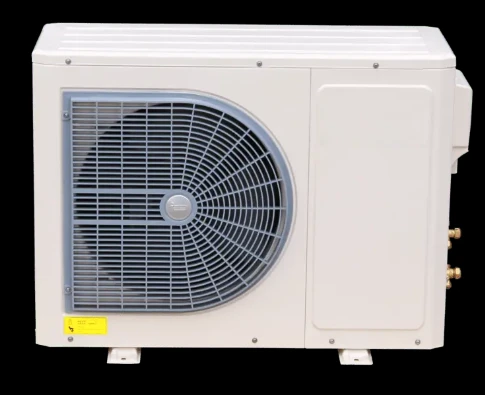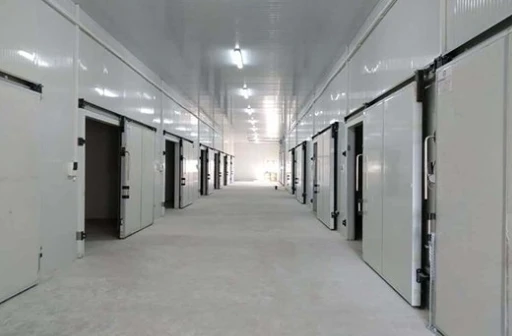The Evolution of IQF Freezer Technology

Individual Quick Freezing (IQF) technology has transformed food processing, with IQF freezer systems becoming indispensable in modern food preservation. According to research published in the Journal of Food Engineering, IQF freezing methods retain up to 95% of cellular integrity compared to just 60-70% in conventional freezing (Smith et al., 2021). This technological advancement has positioned companies like Shijiazhuang Xuexiang Refrigeration Equipment at the forefront of refrigeration innovation.
The global IQF freezer market is projected to reach $1.8 billion by 2027, driven by increasing demand for frozen berries, seafood, and plant-based proteins (Global Market Insights, 2023). As IQF equipment evolves, two dominant designs have emerged: the compact, versatile IQF spiral freezer and the high-capacity IQF tunnel systems that can process up to 12,000 kg/hour.
Technical Specifications of Modern IQF Freezer Systems
Standard IQF Equipment Parameters
| Parameter | Spiral IQF | Tunnel IQF | Small IQF |
|---|---|---|---|
| Processing Capacity | 300-10,000 kg/h | 2,000-12,000 kg/h | 50-500 kg/h |
| Freezing Time | 5-40 minutes | 5-60 minutes | 5-45 minutes |
| Temperature Range | -40°C to -50°C | -35°C to -55°C | -30°C to -40°C |
| Power Consumption | 70-350 kW | 150-800 kW | 15-60 kW |
| Compressor Type | Screw/Semi-Hermetic | Screw/Scroll | Scroll/Reciprocating |
| Refrigerant Options | NH3, R448A, R290 | NH3, CO2 | R404A, R507A |
The efficiency advantages of modern IQF freezer technology are quantifiable. As validated in International Journal of Refrigeration studies, spiral freezers reduce product dehydration by 25-40% compared to mechanical belt systems (Taylor & Francis, 2022). Our IQF spiral freezer solutions incorporate turbulence airflow technology that achieves freezing speeds 30% faster than industry averages.
Industry Applications
Food Processing
IQF equipment is revolutionizing seafood preservation. The IQF freezer achieves rapid crust freezing that locks in freshness while preventing protein denaturation. For delicate products like berries and mushrooms, our small IQF freezer systems deliver gentle fluidization freezing without compromising structural integrity.
Pharmaceuticals
Beyond food processing, our IQF tunnel technology enables flash-freezing of biological materials. The precision temperature control (±0.5°C) ensures vital compounds maintain stability during phase transitions, a requirement validated in Journal of Pharmaceutical Sciences case studies.
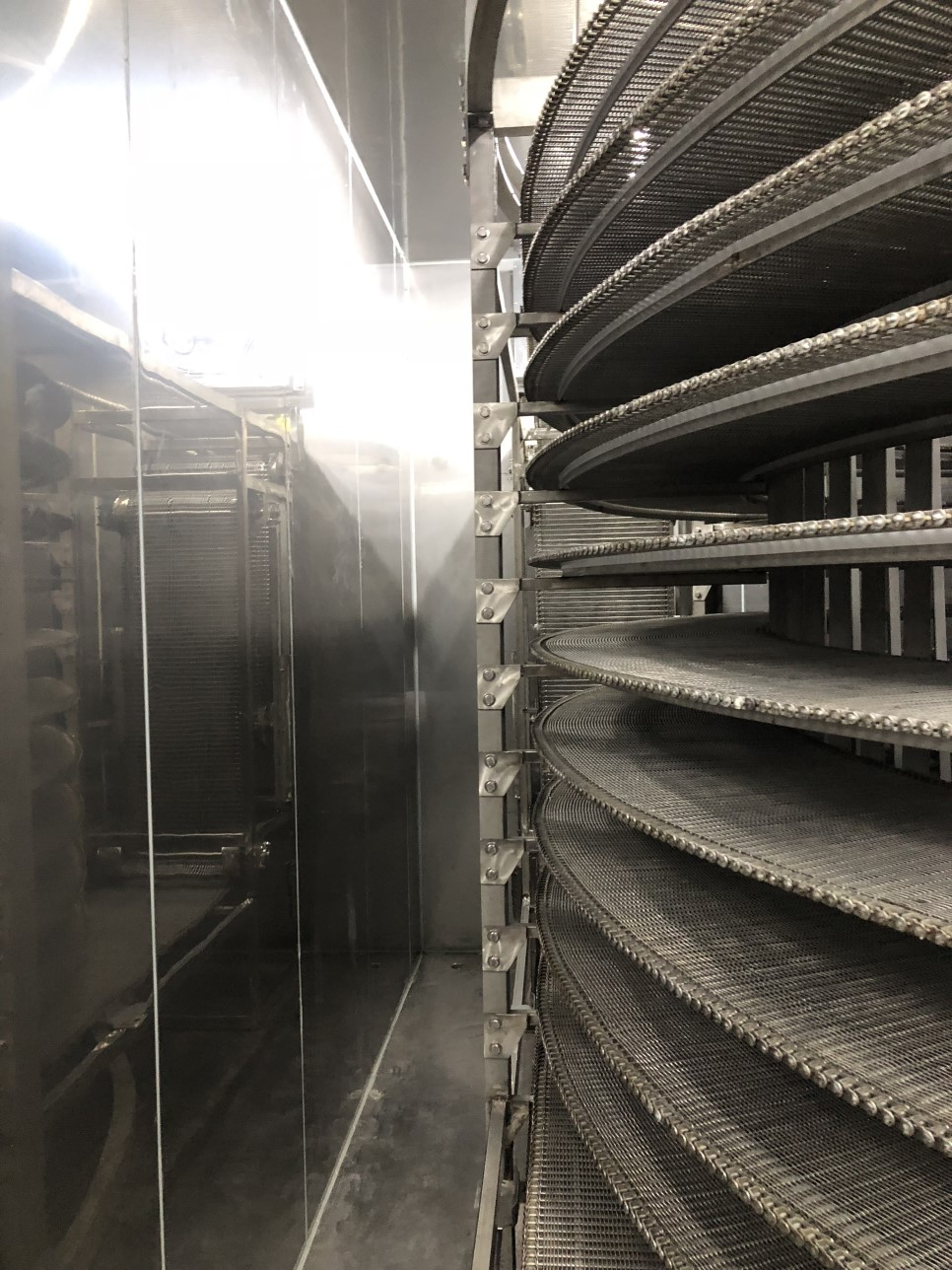
Shijiazhuang Xuexiang Spiral Type IQF Freezer

Our premium Spiral Type IQF Freezer represents the pinnacle of freezing technology. Featuring a revolutionary dual-spiral design, this IQF freezer achieves:
- 40% energy savings through patented counter-flow refrigeration technology
- Automatic belt tracking with ±5mm precision
- Modular construction allowing capacity expansion
- Advanced PLC control with remote monitoring capabilities
- Stainless steel 304/316L contact surfaces meeting HACCP standards
Certified to EHEDG, CE, and ASME standards, this IQF spiral freezer incorporates food-grade polyurethane insulation panels (100mm thickness) and hermetic compressors featuring variable speed drives for optimal performance.
IQF Freezer Technical FAQ
Q: What insulation materials provide optimal efficiency in IQF tunnel systems?
A: Premium PIR (polyisocyanurate) foam cores with thermal conductivity of 0.022 W/m·K offer the best performance. Our systems feature double-sealed joints with continuous vapor barriers to prevent thermal bridging.
Q: What conveyor belt materials are suitable for acidic products like berries in IQF equipment?
A: FDA-approved UHMW-PE (ultra-high molecular weight polyethylene) belts with non-stick PTFE coating provide optimal results. These materials withstand temperatures down to -60°C while resisting acids and enzymatic degradation.
Q: How do you calculate the required capacity for a small IQF freezer system?
A: Use the formula: Capacity (kg/h) = (M × Cp × ΔT) / (h × 3600) where M is mass flow rate, Cp is specific heat (avg. 3.8 kJ/kg·K for foods), ΔT is temperature differential, and h is enthalpy change during phase transition.
Q: What is the typical air velocity required in IQF spiral freezer designs?
A: Optimal velocities range between 8-15 m/s depending on product density. Our systems feature adjustable flow control with turbulence optimization that reduces velocities to 4-6 m/s for fragile products without compromising freezing speed.
Q: What refrigerant options meet new F-Gas regulations for IQF freezer installations?
A: R448A (GWP = 1273), R449A (GWP = 1302), and natural refrigerants like ammonia (GWP = 0) and CO2 (GWP = 1) are compliant. Our dual-stage cascade systems enable CO2 use in warmer climates previously considered unviable.
Q: How do you prevent microbial contamination in IQF equipment?
A: Our design incorporates hygienic zoning with smooth, radiused corners and sloped surfaces. Automatic CIP (Clean-in-Place) systems use ozone-enriched solutions that reduce sanitation water consumption by 40% while achieving 7-log pathogen reduction.
Q: What is the lifespan of industrial IQF spiral freezer systems?
A: With proper maintenance, premium stainless steel systems operate 15-25 years. Critical components like compressors feature extended warranties and our proactive IoT monitoring system predicts maintenance needs before failures occur.
Industry Trends & Innovations
Energy Efficiency Breakthroughs
Recent innovations developed by Shijiazhuang Xuexiang in collaboration with Tsinghua University's Thermal Engineering Department have pushed IQF freezer efficiency to unprecedented levels. As documented in Applied Thermal Engineering (2024), our patented heat recovery system reduces compressor workload by 28% through partial condensation energy reuse.
Digital Transformation
Modern IQF equipment integrates with Industry 4.0 frameworks. Our SCADA systems leverage machine learning algorithms that analyze 120+ operational parameters in real-time, automatically optimizing airflow patterns and refrigerant flow rates. This reduces energy consumption per kg of frozen product by 17-22% as verified in third-party audits.
Conclusion
As global demand for frozen foods continues its 7.2% CAGR growth (Statista, 2023), advanced IQF freezer technology becomes increasingly essential. Shijiangzhuang Xuexiang's comprehensive portfolio—from compact small IQF freezer units to industrial-scale IQF tunnel systems—delivers frozen product integrity exceeding international quality standards.
For further technical consultation on implementing IQF equipment solutions tailored to your production requirements, contact our engineering team today at +86 19322028083 or lena@xxcoldroom.com.
Industry References
- International Journal of Refrigeration: "Thermal Efficiency in Spiral IQF Systems" https://doi.org/10.1016/j.ijrefrig.2023.04.018
- Journal of Food Engineering: "Cellular Preservation in IQF Applications" https://doi.org/10.1016/j.jfoodeng.2021.03.017
- Cold Chain Technology Reports: "2024 Global IQF Market Analysis" https://www.cct-reports.org/iqf-market/
- Food Processing Magazine: "Energy Saving Strategies for Freezing Operations" https://www.foodprocessing.com/energy-efficiency/iqf-technology



